Curating a Museum
Introduction
Text-to-speech Audio
The Kansas City Museum houses over 100,000 historical artifacts and archival materials in its collection. Starting in 1939, over 80 years of donations and accessions have built a collection focused on the history of the Kansas City area, following the Museum's mission of being "home of the whole story" for the city. While the permanent exhibits in the museum have been created using the museum's own collection, there are temporary traveling exhibits that will also visit the museum for patrons to enjoy. Museum collections are meant to be used for education and research, as well as enjoyment and enrichment. The accession and acquisition process, collections process, and the deaccessioning process are covered throughout the exhibit. The Mirror Ball from the El Torreon Ballroom also appears in this room, preparing patrons for the following El Torreon and Cowtown Ballroom exhibit.
Images
Information on Donations, Acquisitions, and Accessions
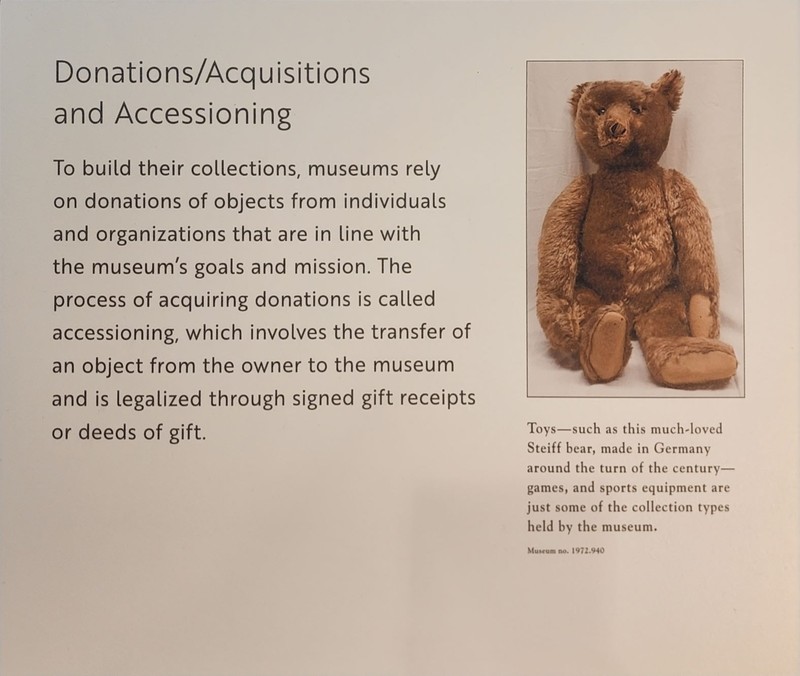
Curating a Museum Wall Plaque
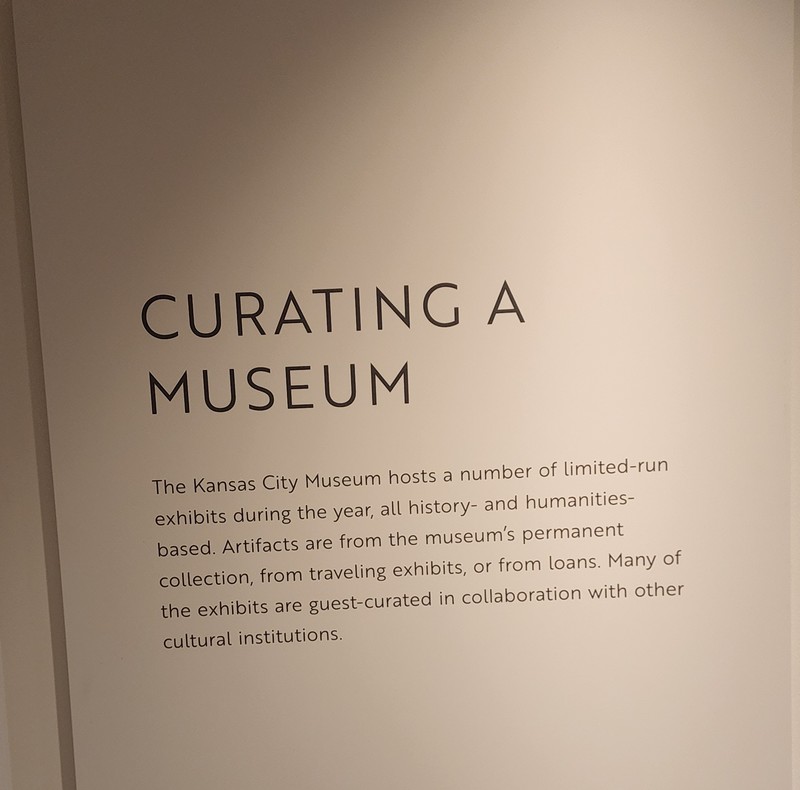
Information on Deaccessioning
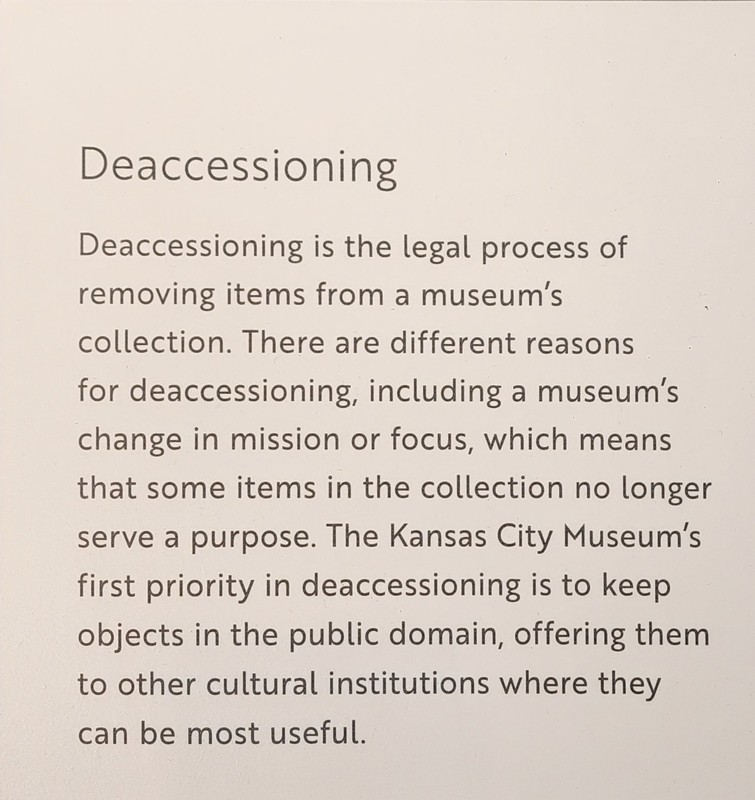
The Mirror Ball from the El Torreon Ballroom
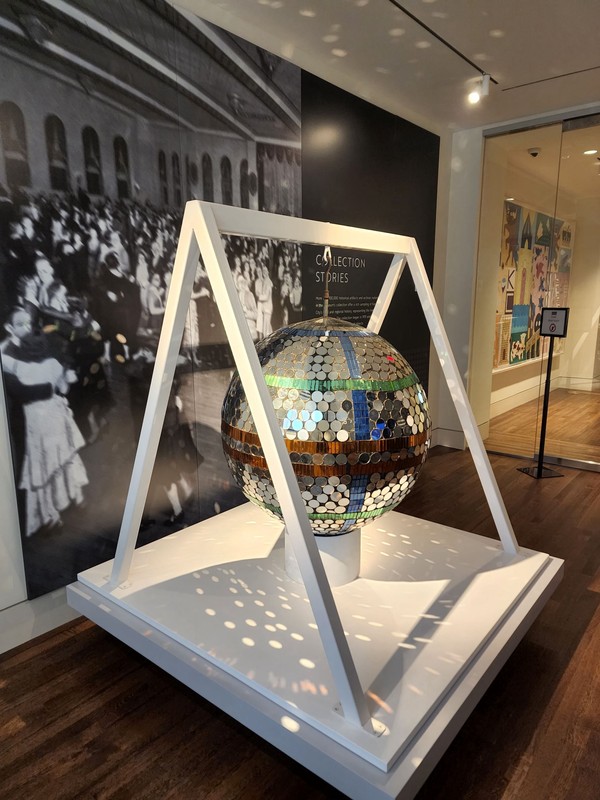
Information on how Museum Collections are Processed
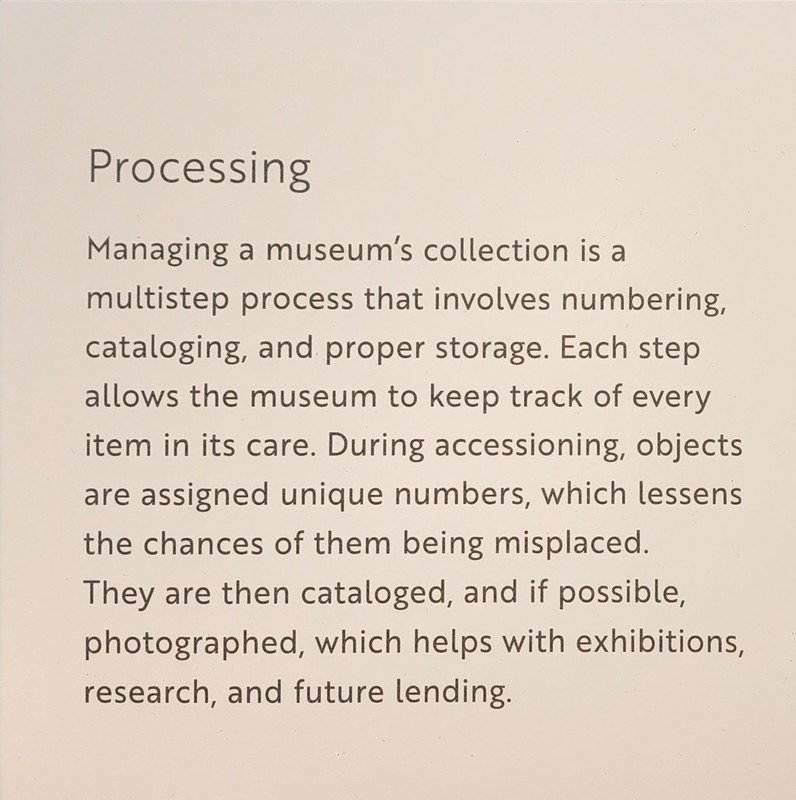
Museum Collections Panel
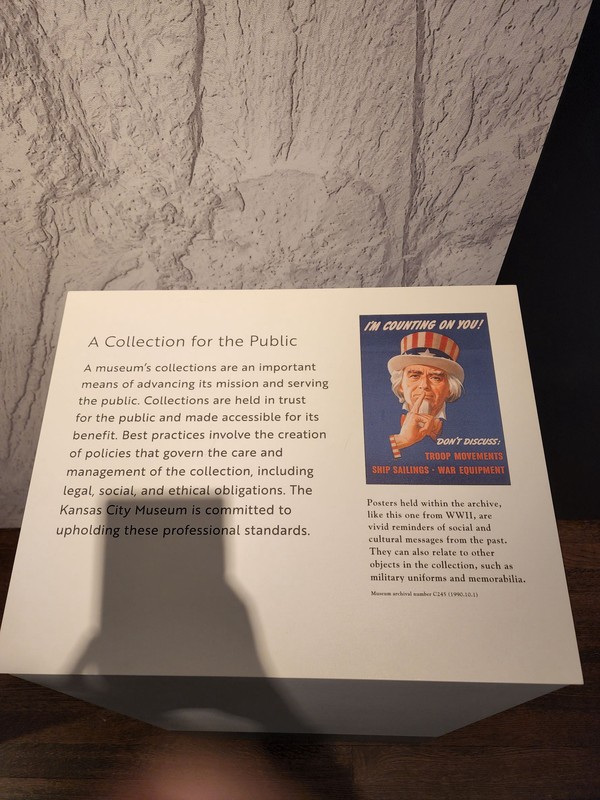
Backstory and Context
Text-to-speech Audio
Museums feature both permanent exhibits and temporary exhibits, with permanent exhibits displaying materials from a museum's own collection. Museum collections reflect the mission of a museum. For example, the Kansas City Museum is "home of the whole story" of Kansas City, thus their collection focuses on the vast history of the Kansas City area. Collections, along with reflecting a museum's mission, should also advance its mission and be used for public good and enrichment. Museum staff have a responsibility to make their collections accessible to the public, and this can be accomplished by establishing best practices for collection care and management, as well as specific obligations of the museum. The Kansas City Museum has established policies to uphold professional standards while also ensuring accessibility within their collection.
The Kansas City Museum is in what they define as the "forever business," or in other words, aiming to collect, store, display, and preserve historical materials permanently. The museum has public funding specifically reserved for the care and preservation of collection materials, assisting their mission. The museum collection itself is mutually owned by Union Station Kansas City and the Kansas City Museum Foundation. Museum collections largely consist of donated materials, the legal transfer of which is known as accessioning. Donations are confirmed and legalized with signed gift receipts or deeds of gift, transferring ownership to the museum. During the accessioning process, objects are given unique numbers in order to keep track of their whereabouts. Processing donations into a museum collection is time-consuming, including cataloging, photographing and organizing the items. Such measures are taken to ensure the best research use and access by patrons, and use for future lending.
Museums also have a process for removing items from their collection known as deaccessioning. There are many different reasons a museum may deaccession materials. If a museum's mission or scope changes, it could lead to the deaccession of certain materials due to their lack of purpose in that specific museum. When deaccessioning is necessary for materials in the Kansas City Museum's collection, the museum ensures that the materials remain in the public domain so that other cultural institutions may accession useful materials. While this is a simplified explanation of the process, there are many policies and checks-and-balances before deaccessioning items. The process of preparing a museum's collection for storage and use is taxing, yet museum professionals rise to the occasion again and again. Overall, museums are cultural institutions that serve the public through providing access to their designated collections in many ways. Museums also provide educational programming and experiences, research opportunities, and entertainment for patrons.
The Mirror Ball that once hung in the El Torreon Ballroom is a part of the Kansas City Museum collection, and is now displayed on the third floor. Installed at the El Torreon in 1927, the mirror ball now serves as a reminder of the music and dance scene in Kansas City throughout the 20th century. Donated to the museum in 1976, the mirror ball made an appearance in the 1990 film, "Mr. and Mrs. Bridge," as well as the 2009 documentary film "Cowtown Ballroom: Sweet Jesus." Museum renovations gave the mirror ball new life, bringing it out from storage for the first time in years for patrons to admire as they enter the El Torreon and Cowtown Ballroom exhibit.
Sources
Kansas City Museum, 3218 Gladstone Blvd., Kansas City, MO, 64123 (accessed March 8, 2022). Wall Plaques: Wall text. Curating a Museum: A History of El Torreon and Cowtown Ballroom, Kansas City Museum, Kansas City, Missouri.
